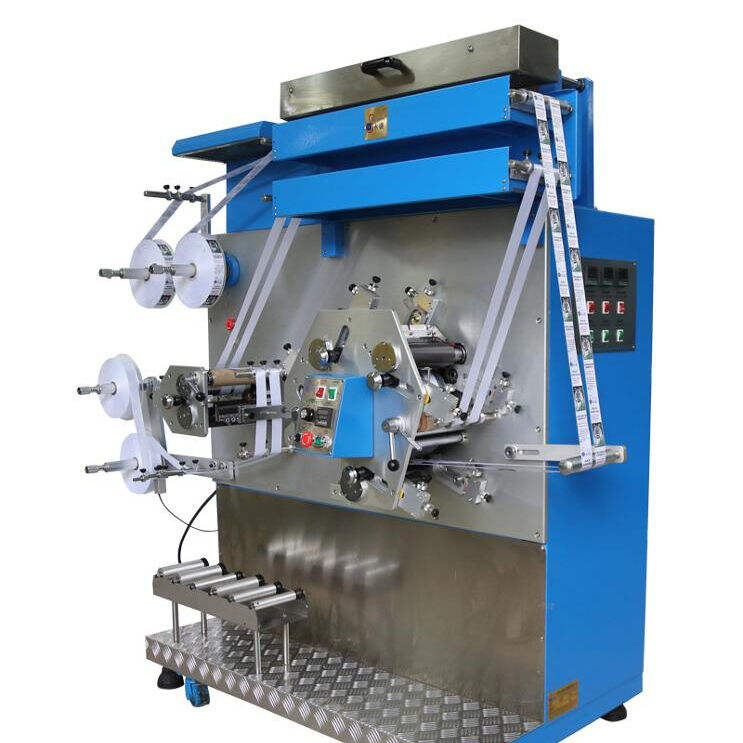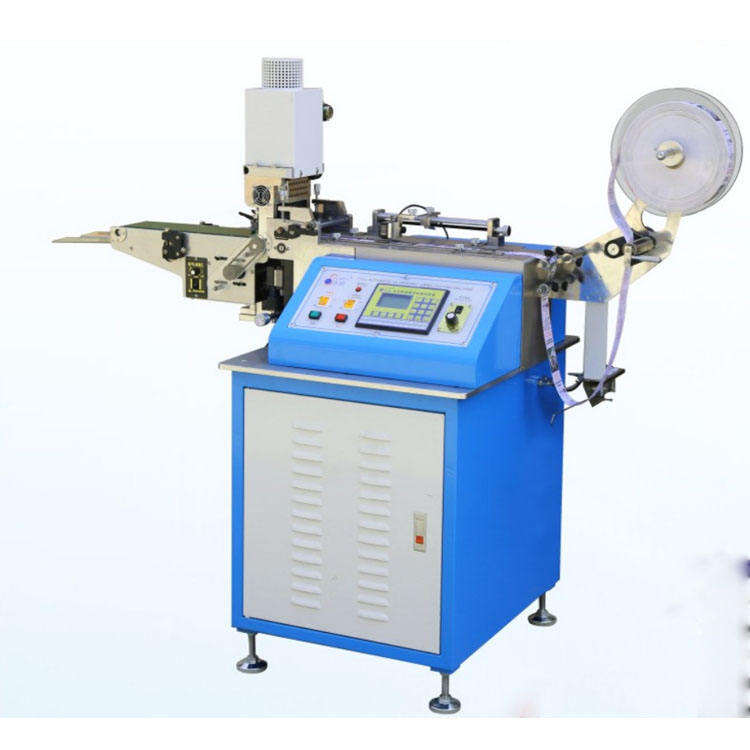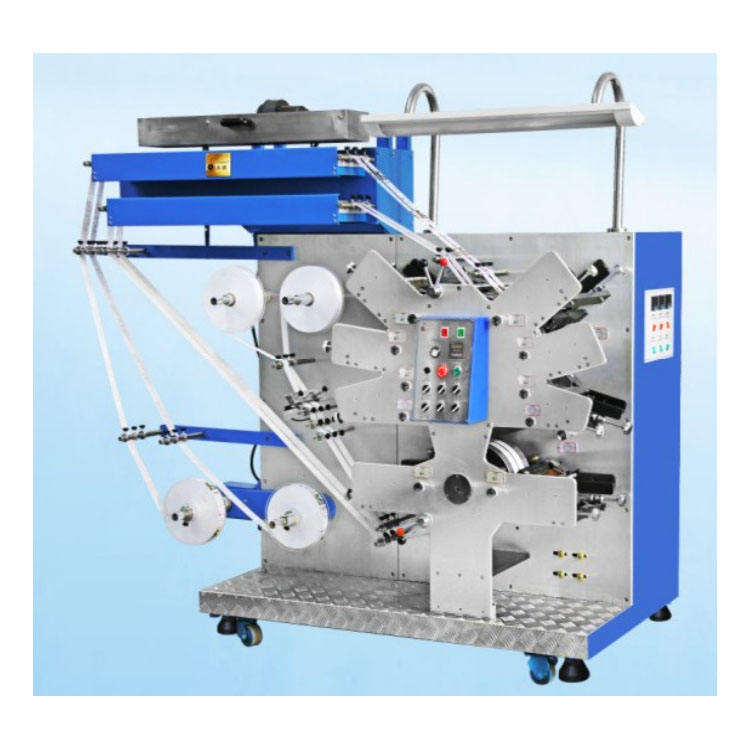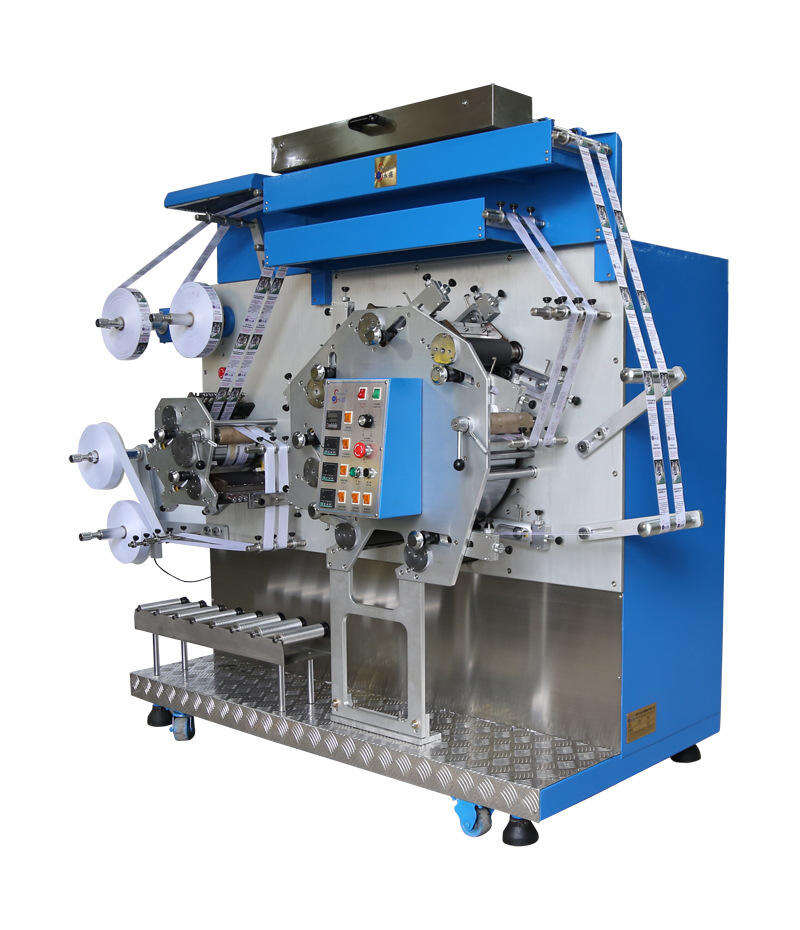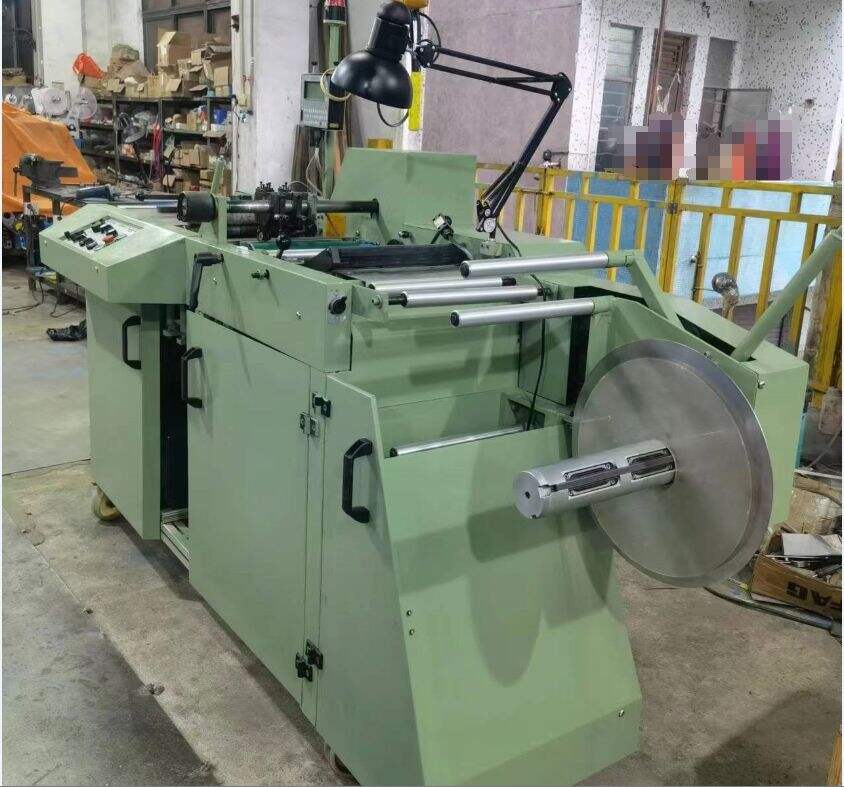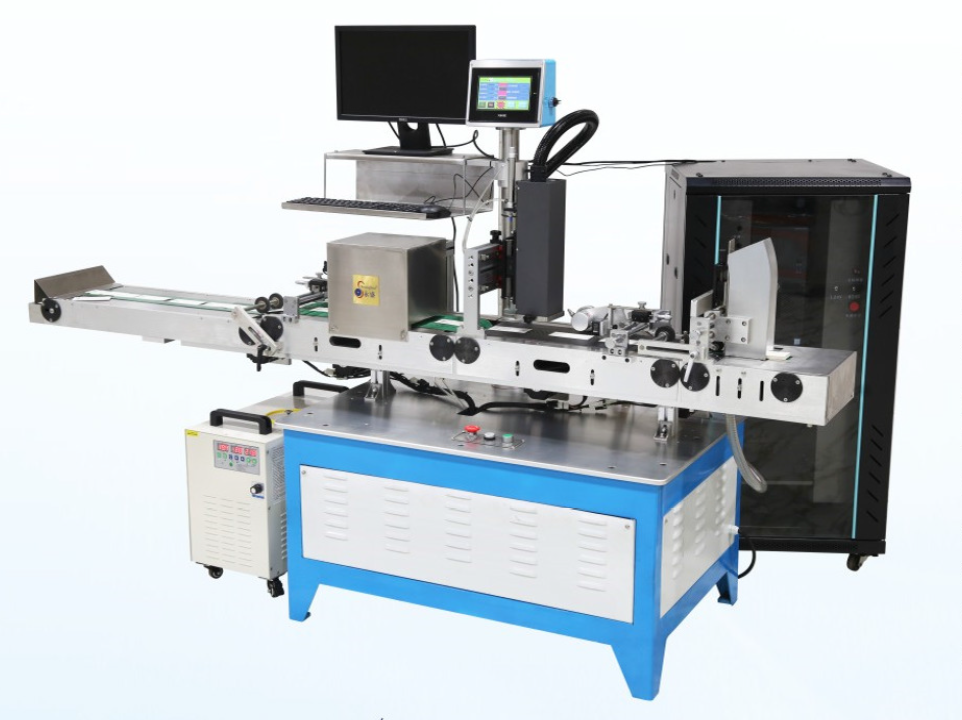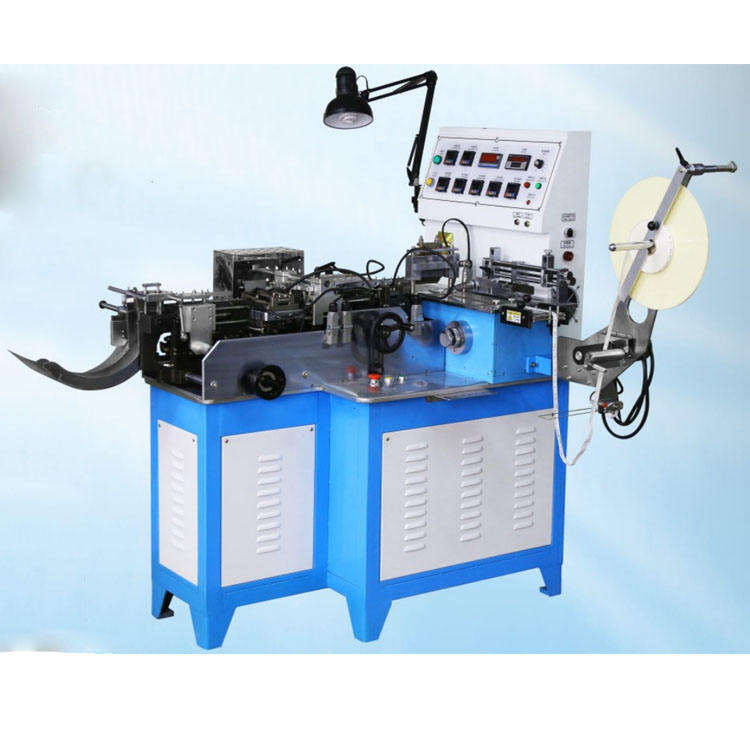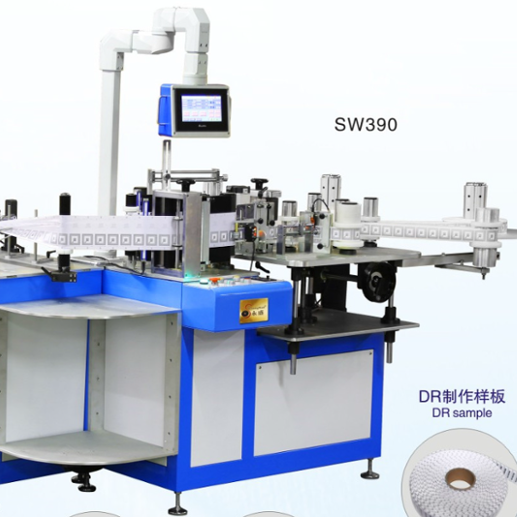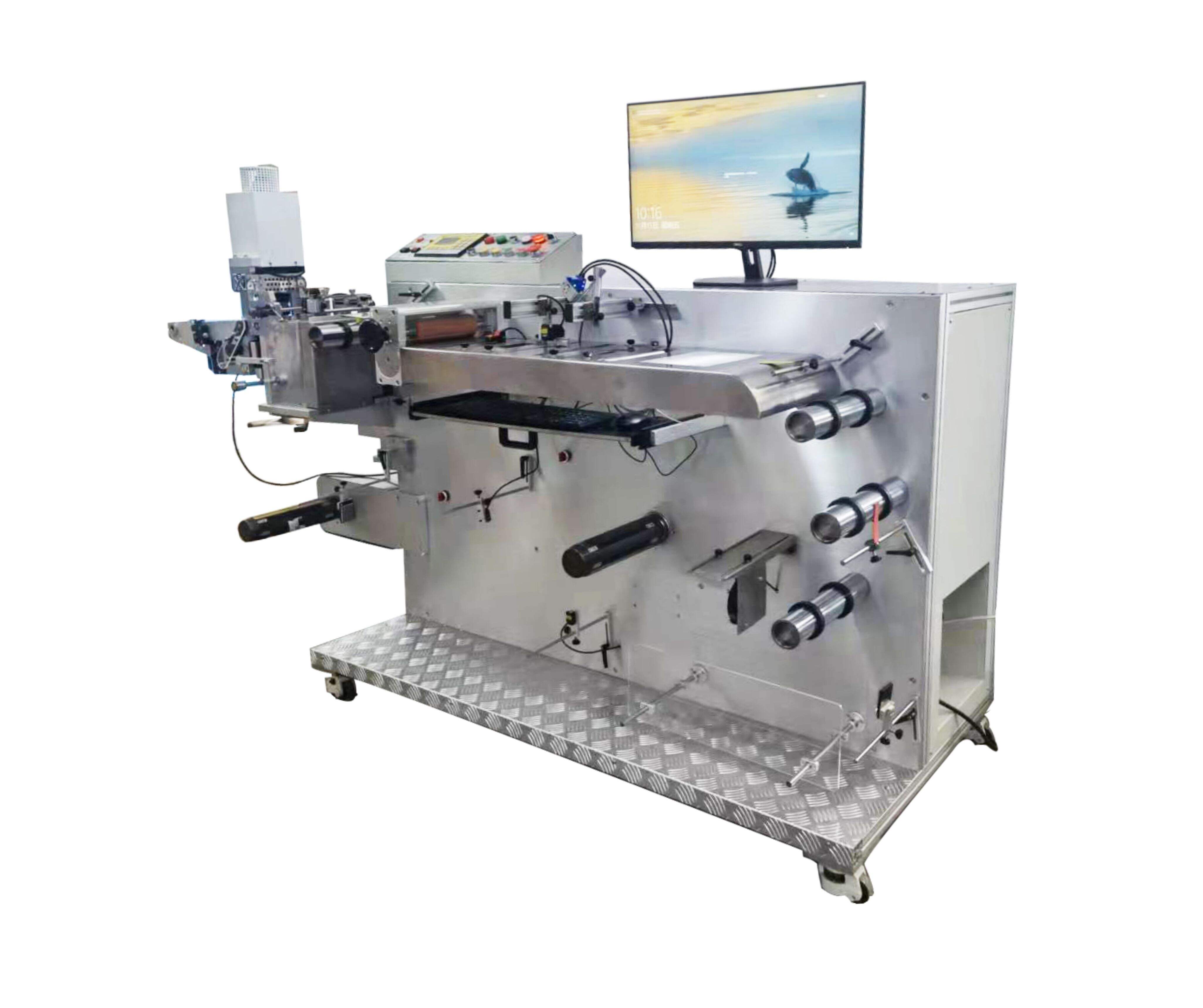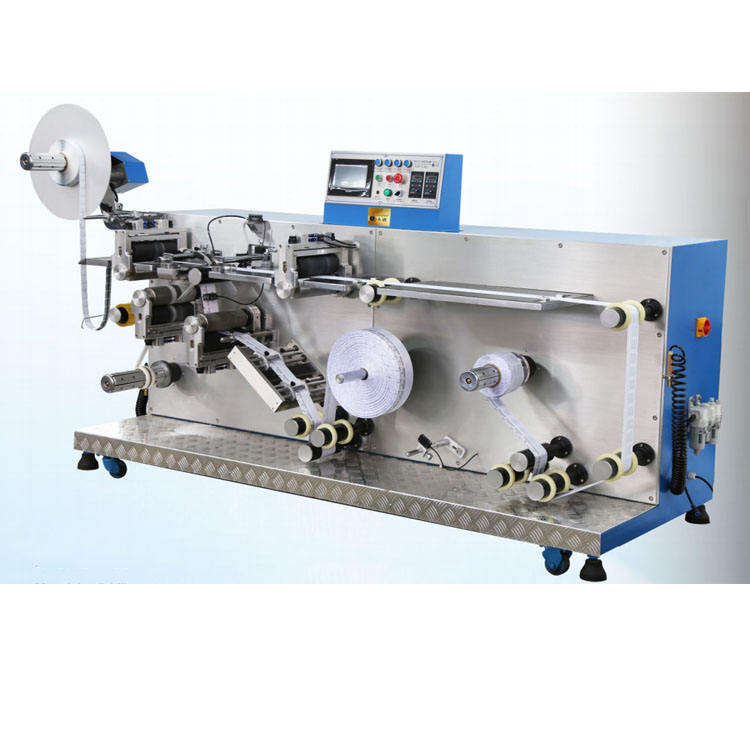วิธีการพิมพ์หน้าจอแบบหลายสีให้ตำแหน่งตรงกันอย่างสมบูรณ์แบบ
เชี่ยวชาญการพิมพ์สกรีนหลายสี: การจัดแนวให้แม่นยำ
การพิมพ์สกรีน เป็นเทคนิคที่ใช้กันอย่างแพร่หลายในการถ่ายโอนลวดลายไปยังวัสดุต่าง ๆ เช่น ผ้า กระดาษ และแม้แต่โลหะ เมื่อพูดถึงการสร้างงานพิมพ์สกรีนหลายสี การจัดแนวให้แม่นยำมักเป็นงานที่ท้าทายอยู่เสมอ การจัดแนวให้แม่นยำคือการปรับแนวแต่ละชั้นของหมึกพิมพ์ในระหว่างกระบวนการพิมพ์ เพื่อให้สีแต่ละสีเข้ากันได้อย่างไร้รอยต่อ ในบทความนี้ เราจะมาสำรวจขั้นตอนสำคัญสำหรับการสร้างงานพิมพ์สกรีนหลายสีที่มีการจัดแนวอย่างสมบูรณ์ โดยเน้นเทคนิค อุปกรณ์ และเคล็ดลับสำคัญที่จะช่วยให้คุณเชี่ยวชาญกระบวนการนี้
ความสำคัญของการจัดแนวให้แม่นยำในการพิมพ์สกรีนหลายสี
เหตุใดการจัดแนวจึงสำคัญสำหรับการพิมพ์หลายสี
ในการพิมพ์สกรีนหลายสี จุดประสงค์คือการทับซ้อนชั้นของหมึกสีต่างๆ กันอย่างไรก็ตามหมึกสีเหล่านี้จะต้องตรงกันบนวัสดุพื้นฐานอย่างแม่นยำ หากไม่มีการจัดแนว (Registration) ที่เหมาะสม สีต่างๆ อาจปรากฏว่าไม่ตรงกัน ทำให้การออกแบบดูเบลอหรือไม่สมบูรณ์ การจัดแนวที่เหมาะสมจะช่วยให้แน่ใจได้ว่าสีแต่ละสีถูกพิมพ์ไว้ในตำแหน่งที่ตั้งใจไว้แม่นยำ สร้างลวดลายที่คมชัด มีชีวิตชีวา และดูเป็นมืออาชีพ ความสำคัญของการจัดแนวให้แม่นยำไม่สามารถเน้นย้ำได้มากพอ โดยเฉพาะสำหรับการออกแบบที่มีรายละเอียดซับซ้อน หรือใช้หลายชั้นสี การจัดแนวสีที่ผิดพลาดไม่เพียงแต่ส่งผลต่อความสวยงามของผลิตภัณฑ์สุดท้ายเท่านั้น แต่ยังอาจนำไปสู่การสูญเสียวัสดุจำนวนมากขึ้น และต้นทุนที่เพิ่มขึ้นอีกด้วย เนื่องจากงานพิมพ์ที่จัดแนวไม่ถูกต้องมักต้องพิมพ์ใหม่หรือปรับแต่งเพิ่มเติม ทำให้ต้องใช้เวลามากขึ้นและทรัพยากรมากขึ้น ดังนั้น การทำให้เกิดการจัดแนวที่สมบูรณ์แบบในการพิมพ์สกรีนหลายสี จึงไม่ใช่เพียงแค่เรื่องของความสวยงาม แต่ยังเป็นการเพิ่มประสิทธิภาพและลดของเสียในกระบวนการพิมพ์อีกด้วย
การเข้าใจความท้าทายในการพิมพ์สกรีนหลายสี
การพิมพ์สกรีนหลายสีจะต้องใช้แม่แบบหลายชุด โดยแต่ละชุดทำหน้าที่รับผิดชอบสีหนึ่งสีในแบบที่ออกแบบไว้ การจัดแนวแม่แบบให้ตรงกันอย่างแม่นยำเพื่อป้องกันไม่ให้หมึกทับซ้อนหรือเบี้ยวเป็นหนึ่งในความท้าทายที่ใหญ่ที่สุดในกระบวนการนี้ ปัจจัยต่างๆ เช่น แรงตึงของแม่แบบไม่เหมาะสม กรอบแม่แบบไม่ตรงกัน และแรงกดในการพิมพ์ไม่สม่ำเสมอ ล้วนส่งผลให้เกิดปัญหาการจัดแนวได้ ยิ่งไปกว่านั้น ประเภทของวัสดุที่นำมาพิมพ์ก็มีผลต่อผลลัพธ์ด้วย พื้นผิวที่ไม่เรียบหรือมีพื้นผิวขรุขระก็อาจทำให้การจัดแนวทำได้ยากยิ่งขึ้น นอกจากนี้ เมื่อทำงานกับสีหลายสี การจัดแนวให้ตรงกันอย่างสมบูรณ์ต้องอาศัยการวางแผนอย่างรอบคอบ หมึกแต่ละชั้นจะต้องถูกพิมพ์ตามลำดับที่ถูกต้องและจัดแนวให้ตรงแม่นยำเพื่อหลีกเลี่ยงการทับซ้อนของสีหรือข้อผิดพลาดในการพิมพ์ แม้ว่าจะเป็นเรื่องที่ท้าทาย แต่ผลลัพธ์ที่ได้ก็คุ้มค่า เนื่องจากงานพิมพ์หลายสีที่จัดแนวได้อย่างสมบูรณ์สามารถยกระดับคุณภาพของแบบที่ออกแบบไว้ได้อย่างมาก

เทคนิคพื้นฐานสำหรับการลงทะเบียนให้สมบูรณ์แบบ
การใช้ระบบลงทะเบียนเพื่อให้แน่ใจว่ามีความตรงกัน
หนึ่งในวิธีที่มีประสิทธิภาพที่สุดในการให้ได้มาซึ่งการลงทะเบียนที่สมบูรณ์แบบในการพิมพ์หลายสีด้วยเครื่องพิมพ์แบบหน้าจอคือการใช้ระบบลงทะเบียน ระบบนี้ถูกออกแบบมาเพื่อรักษาการจัดแนวหน้าจออย่างแม่นยำ ทำให้แน่ใจได้ว่าแต่ละสีถูกพิมพ์ในตำแหน่งที่ถูกต้อง มีระบบลงทะเบียนหลายประเภทให้เลือก รวมถึงตัวเลือกแบบแมนนวลและแบบอัตโนมัติ ระบบแบบแมนนวลมักเกี่ยวข้องกับการใช้คู่มือจัดแนวหรือหมุดยึด ในขณะที่ระบบอัตโนมัติใช้การควบคุมแบบดิจิทัลเพื่อปรับตำแหน่งของหน้าจอ การนำระบบลงทะเบียนมาใช้ในกระบวนการทำงานของคุณ จะช่วยลดโอกาสการจัดแนวผิดพลาดได้อย่างมาก ระบบจะรับประกันว่าแต่ละหน้าจอถูกจัดแนวอย่างเหมาะสมในระหว่างกระบวนการพิมพ์ กำจัดความไม่แน่นอน และช่วยให้คุณสามารถมุ่งเน้นไปที่การให้ได้มาซึ่งผลลัพธ์ที่มีคุณภาพสูง ไม่ว่าคุณจะพิมพ์ในระดับเล็กหรือสำหรับการผลิตจำนวนมาก ระบบลงทะเบียนที่เชื่อถือได้ถือเป็นสิ่งจำเป็นเพื่อให้ได้การพิมพ์หลายสีที่สม่ำเสมอและแม่นยำ
แรงตึงของหน้าจอและการตั้งค่าที่เหมาะสม
ความตึงของหน้าจอมีบทบาทสำคัญอย่างยิ่งต่อการสร้างงานพิมพ์ที่สมบูรณ์แบบ หน้าจอที่หลวมหรือแน่นเกินไปอาจทำให้หมึกไหลหรือบิดเบี้ยว ซึ่งนำไปสู่ปัญหาการจัดวาง การตรวจสอบให้แน่ใจว่าหน้าจอแต่ละหน้าจอได้รับการปรับความตึงอย่างเหมาะสมเป็นสิ่งสำคัญอย่างยิ่งต่อการรักษาแรงกดให้สม่ำเสมอตลอดกระบวนการพิมพ์ สิ่งสำคัญคือต้องตรวจสอบความตึงอย่างสม่ำเสมอและปรับตามความจำเป็นเพื่อป้องกันปัญหาที่อาจเกิดขึ้นระหว่างการพิมพ์ นอกจากความตึงของหน้าจอแล้ว การตั้งค่าแท่นพิมพ์ก็เป็นอีกปัจจัยหนึ่งที่ส่งผลต่อการจัดวาง ตรวจสอบให้แน่ใจว่าส่วนประกอบทั้งหมดของแท่นพิมพ์ เช่น โครง ลูกกลิ้งปาดหมึก และถาดหมึก ได้รับการปรับให้ถูกต้อง ควรปรับระดับแท่นพิมพ์เพื่อให้มั่นใจว่าแรงกดที่ใช้ระหว่างกระบวนการพิมพ์นั้นสม่ำเสมอทั่วทั้งหน้าจอ การตั้งค่าที่ถูกต้องเป็นสิ่งสำคัญอย่างยิ่งเพื่อลดความเสี่ยงของการจัดวางที่ผิดพลาด และให้งานพิมพ์ที่ราบรื่นและแม่นยำทุกครั้ง
เคล็ดลับขั้นสูงสำหรับการพิมพ์ตะแกรงแบบหลายสี
พิมพ์ทดสอบและการทับสี
ก่อนเริ่มพิมพ์งานจำนวนมาก เป็นสิ่งสำคัญที่จะต้องทำการพิมพ์ทดสอบเพื่อตรวจสอบการจัดแนวและการจัดระดับสี การพิมพ์ทดสอบจะช่วยให้คุณเห็นว่าสีต่างๆ มีการทับซ้อนกันบนวัสดุอย่างไร และมีความจำเป็นต้องปรับแต่งเพิ่มเติมหรือไม่ ระหว่างการพิมพ์ทดสอบ คุณสามารถพิมพ์แต่ละสีทีละสีเพื่อตรวจสอบว่ามีการจัดแนวไม่ตรงกันหรือมีช่องว่างระหว่างชั้นหรือไม่ การใช้เทคนิคซ้อนทับสีก็มีประโยชน์เช่นกัน เพื่อให้แน่ใจว่าสีต่างๆ ไม่ทับซ้อนหรือรบกวนกัน การพิมพ์ทดสอบสามารถทำได้บนวัสดุเดียวกันที่ใช้ในงานพิมพ์จริง หรือบนวัสดุเศษเพื่อประหยัดทรัพยากร การระบุปัญหาที่อาจเกิดขึ้นเกี่ยวกับการจัดระดับไว้ล่วงหน้าก่อนการผลิตจริงจะช่วยประหยัดเวลา ค่าใช้จ่าย และแรงงานในการแก้ไขข้อผิดพลาดในภายหลัง ยิ่งคุณทำการพิมพ์ทดสอบมากเท่าไร งานพิมพ์จริงของคุณก็จะออกมาดีมากขึ้นเท่านั้น เนื่องจากคุณได้ปรับแต่งกระบวนการทำงานจัดระดับไว้ล่วงหน้าแล้ว
ใช้เครื่องพิมพ์แบบซีกรอโต้หรือแบบอัตโนมัติ
สำหรับผู้ที่ต้องการให้ได้ผลงานการพิมพ์ที่แม่นยำในระดับที่ใหญ่ขึ้น เครื่องพิมพ์สกรีนแบบกึ่งอัตโนมัติหรือแบบอัตโนมัติเต็มรูปแบบจะช่วยเพิ่มขีดความสามารถได้อย่างมาก เครื่องจักรเหล่านี้ถูกออกแบบมาเพื่อจัดการความซับซ้อนของการพิมพ์สกรีนหลายสีด้วยความแม่นยำสูง โดยการใช้ระบบอัตโนมัติจะช่วยให้แน่ใจได้ว่าแม่พิมพ์สกรีนจะถูกจัดแนวอย่างถูกต้องตลอดเวลา ลดความเสี่ยงจากข้อผิดพลาดของมนุษย์ และให้ผลลัพธ์ที่มีความสม่ำเสมอ เครื่องแบบกึ่งอัตโนมัติและแบบอัตโนมัติมักมาพร้อมกับระบบจัดแนวขั้นสูงที่ช่วยให้การปรับแนวแม่พิมพ์ทำได้อย่างรวดเร็วและแม่นยำมากยิ่งขึ้น ด้วยความสามารถในการปรับตำแหน่งของแม่พิมพ์โดยอัตโนมัติ เครื่องจักรเหล่านี้สามารถช่วยประหยัดเวลาและเพิ่มประสิทธิภาพโดยรวมของกระบวนการพิมพ์ได้อย่างมาก แม้ว่าอาจต้องลงทุนเริ่มต้นที่สูงกว่า แต่ก็ถือเป็นทางเลือกที่ยอดเยี่ยมสำหรับธุรกิจที่ต้องการผลิตงานพิมพ์หลายสีคุณภาพสูงในปริมาณมาก
ความสำคัญของการเลือกวัสดุและหมึกพิมพ์ในการพิมพ์สกรีนหลายสี
การเลือกผ้าใบหรือวัสดุฐานที่เหมาะสม
ประเภทของวัสดุที่คุณพิมพ์อาจส่งผลต่อการจัดแนวของการพิมท์หลายสีแบบซิลค์สกรีนของคุณ ตัวอย่างเช่น การพิมพ์บนผ้า เช่น เสื้อยืด หรือผ้าทอ มักเป็นเรื่องที่ท้าทายเพราะเนื้อผ้าอาจยืดหรือเคลื่อนตัวระหว่างกระบวนการพิมพ์ ซึ่งอาจทำให้เกิดการไม่ตรงกันระหว่างเลเยอร์ของหมึกพิมพ์ เพื่อป้องกันปัญหาเหล่านี้ สิ่งสำคัญคือการเลือกใช้วัสดุที่เหมาะสมกับการพิมพ์แบบซิลค์สกรีน และมีพื้นผิวเรียบและสม่ำเสมอ เมื่อพิมพ์บนผ้า จำเป็นอย่างยิ่งที่จะต้องใช้หมึกพิมพ์ซิลค์สกรีนที่เหมาะสมกับชนิดของผ้า เพื่อให้หมึกยึดเกาะได้ดีและคงความสดใสไว้ได้ในระยะยาว เช่นเดียวกันกับวัสดุอื่นๆ เช่น กระดาษหรือพลาสติก การเลือกหมึกที่เหมาะสมกับวัสดุเป็นสิ่งสำคัญอย่างยิ่งในการให้ได้ผลลัพธ์ที่มีการจัดแนวที่แม่นยำและมีคุณภาพสูง สำหรับวัสดุแต่ละชนิด การทำตัวอย่างพิมพ์ก่อนจะช่วยให้แน่ใจได้ว่าหมึกไหลได้ดีและจัดแนวตรงกับสีอื่นๆ อย่างแม่นยำ
การใช้หมึกคุณภาพสูงเพื่อให้ได้ความสม่ำเสมอ
คุณภาพของหมึกที่คุณใช้ก็มีบทบาทสำคัญในการทำให้การลงทะเบียน (Registration) ออกมาสมบูรณ์แบบ หมึกที่มีคุณภาพสูงนั้นจำเป็นอย่างยิ่งในการรักษาความสม่ำเสมอของสีในทุกๆ ชั้นของการพิมพ์ หมึกที่มีคุณภาพต่ำอาจก่อให้เกิดปัญหา เช่น เวลาแห้งที่ไม่สม่ำเสมอ การไหลเยิ้มของสี หรือการลงสีที่ไม่สม่ำเสมอ ซึ่งทั้งหมดนี้อาจรบกวนการลงทะเบียนที่ถูกต้อง การใช้หมึกที่มีคุณภาพสูงและออกแบบมาเฉพาะสำหรับงานพิมพ์แบบซิลค์สกรีนนั้น จะช่วยให้สีสันคงที่ตลอดกระบวนการพิมพ์ หมึกเหล่านี้ถูกออกแบบมาให้ไหลผ่านตะแกรงได้อย่างราบรื่น เพื่อสร้างเส้นสายที่คมชัดและสะอาด โดยปราศจากการเลอะเปื้อนหรือการไหลเยิ้มที่ไม่ต้องการ สำหรับงานพิมพ์ที่มีหลายสีนั้น สิ่งนี้มีความสำคัญอย่างยิ่ง เนื่องจากแต่ละชั้นของหมึกจะต้องจัดแนวให้ตรงกันอย่างแม่นยำกับชั้นก่อนหน้า เพื่อให้ได้การออกแบบที่ต้องการ
คำถามที่พบบ่อย
ฉันจะสามารถทำให้การลงทะเบียน (Registration) สำหรับการพิมพ์ซิลค์สกรีนหลายสีออกมาสมบูรณ์แบบได้อย่างไร?
เพื่อให้ได้การจดทะเบียนที่สมบูรณ์แบบ สิ่งสำคัญคือต้องใช้ระบบจดทะเบียนที่เชื่อถือได้ รักษาแรงตึงของหน้าจอให้เหมาะสม และตรวจสอบให้แน่ใจว่าเครื่องพิมพ์ได้รับการตั้งค่าอย่างถูกต้อง การพิมพ์ทดสอบและปรับแต่งการจัดแนวอย่างสม่ำเสมอจะช่วยให้คุณปรับปรุงกระบวนการทำงานได้
ทำไมแรงตึงของหน้าจอจึงสำคัญต่อการพิมพ์สีหลายสี
แรงตึงของหน้าจอที่เหมาะสมจะช่วยให้หมึกถูกพิมพ์ออกมาอย่างสม่ำเสมอทั่วทั้งพื้นผิว เพื่อป้องกันการบิดเบือน คราบเปื้อน หรือการจัดแนวที่ผิดพลาด การใช้หน้าจอหลวมเกินไปหรือตึงเกินไป อาจทำให้หมึกพิมพ์ไม่สม่ำเสมอ ซึ่งส่งผลต่อการจดทะเบียน
ฉันสามารถใช้เครื่องจักรอัตโนมัติสำหรับการพิมพ์หน้าจอแบบหลายสีได้หรือไม่
ได้ เครื่องพิมพ์แบบหน้าจออัตโนมัติหรือกึ่งอัตโนมัติเหมาะสำหรับงานพิมพ์หลายสี เนื่องจากสามารถจัดแนวได้อย่างแม่นยำและจัดการกับแบบดีไซน์ที่ซับซ้อนได้อย่างมีประสิทธิภาพ เครื่องจักรเหล่านี้มักมาพร้อมกับระบบจดทะเบียนในตัวที่ช่วยเพิ่มความแม่นยำในการพิมพ์
ฉันควรใช้หมึกประเภทใดสำหรับการพิมพ์หน้าจอแบบหลายสี
สำหรับการพิมพ์หน้าจอแบบหลายสีนั้น สิ่งสำคัญคือการใช้หมึกพิมพ์คุณภาพสูงที่เหมาะสำหรับงานพิมพ์แบบซิลค์สกรีนโดยเฉพาะ หมึกพิมพ์เหล่านี้ได้รับการออกแบบมาเพื่อให้สีสันสม่ำเสมอ ป้องกันการเลอะเปื้อน และยึดติดได้ดีกับวัสดุหลากหลายชนิด ช่วยให้การพิมพ์มีความแม่นยำและให้สีสันที่สดใส
สินค้าที่แนะนำ
ข่าวเด่น
-
สังเกตถึงความสําคัญทางวัฒนธรรมของเครื่องพิมพ์ ในการอนุรักษ์และกระจายความรู้
2023-12-08
-
บทบาทของเครื่องพิมพ์ในเศรษฐกิจโลก
2023-12-08
-
ผลต่อสิ่งแวดล้อม: การวิเคราะห์ผลกระทบต่อสิ่งแวดล้อมของอุตสาหกรรมพิมพ์
2023-12-08
-
ด้านการพิมพ์: การพิมพ์ 3D และการฟื้นฟูอุตสาหกรรม
2023-12-08
-
การพัฒนาและผลกระทบของเครื่องพิมพ์
2023-12-08
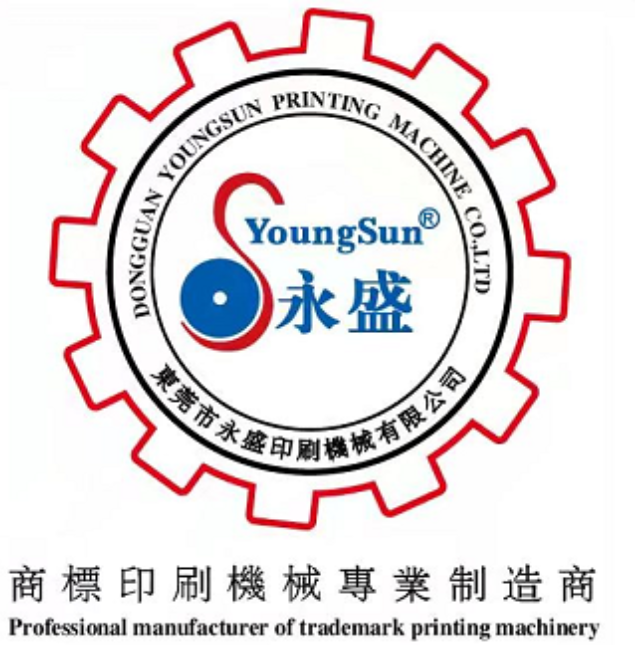
 EN
EN
 AR
AR
 CS
CS
 DA
DA
 NL
NL
 FI
FI
 FR
FR
 DE
DE
 EL
EL
 HI
HI
 IT
IT
 JA
JA
 KO
KO
 PL
PL
 PT
PT
 RO
RO
 RU
RU
 ES
ES
 SV
SV
 IW
IW
 ID
ID
 VI
VI
 SQ
SQ
 HU
HU
 MT
MT
 TH
TH
 TR
TR
 AF
AF
 GA
GA
 BN
BN
 BS
BS
 LO
LO
 LA
LA
 MI
MI
 MN
MN
 NE
NE
 MY
MY
 KK
KK
 UZ
UZ
 KY
KY
